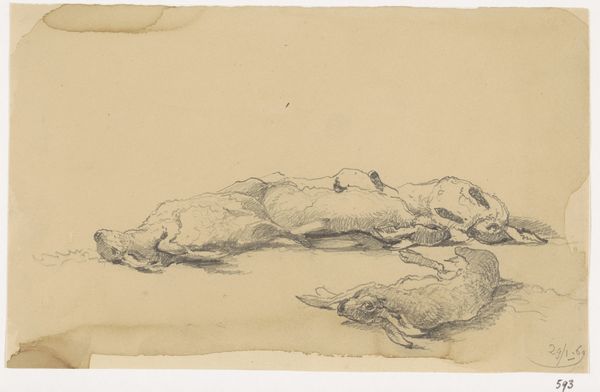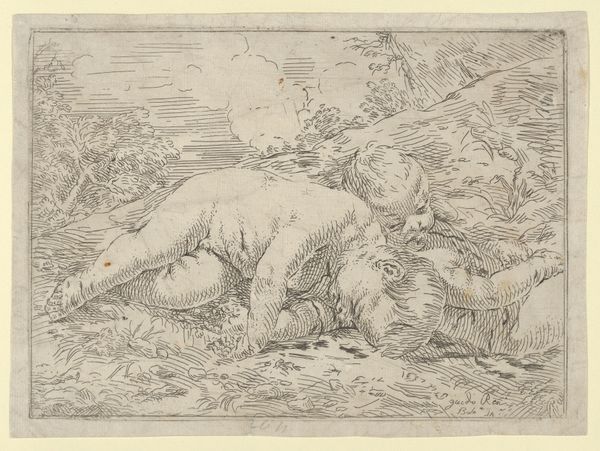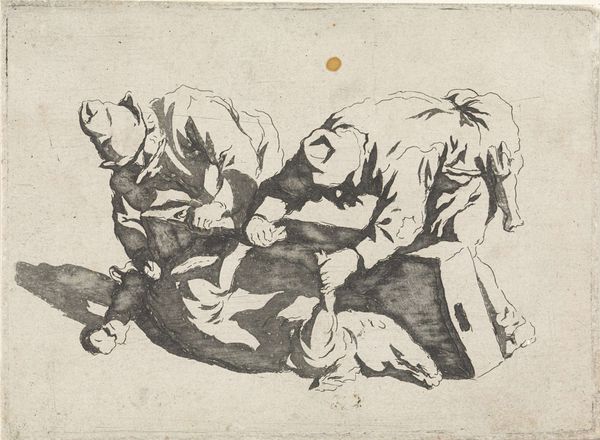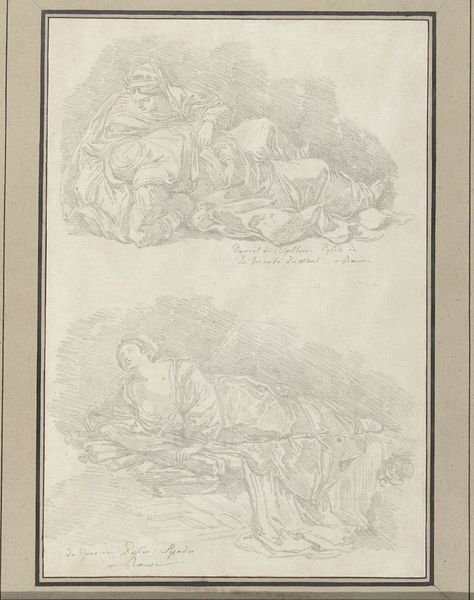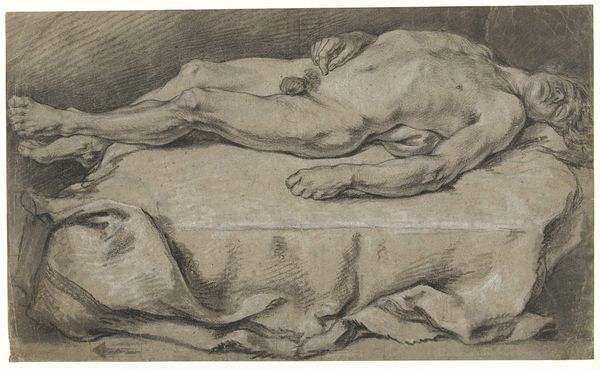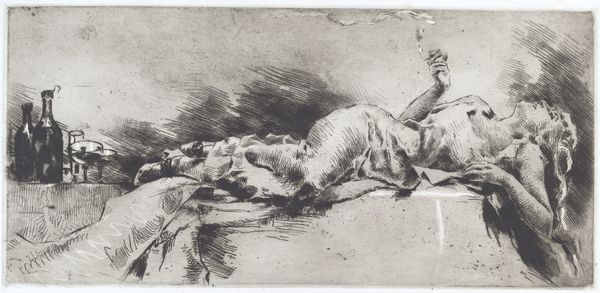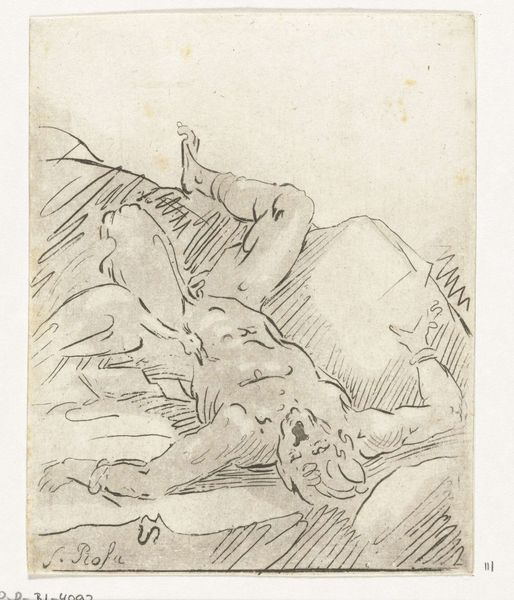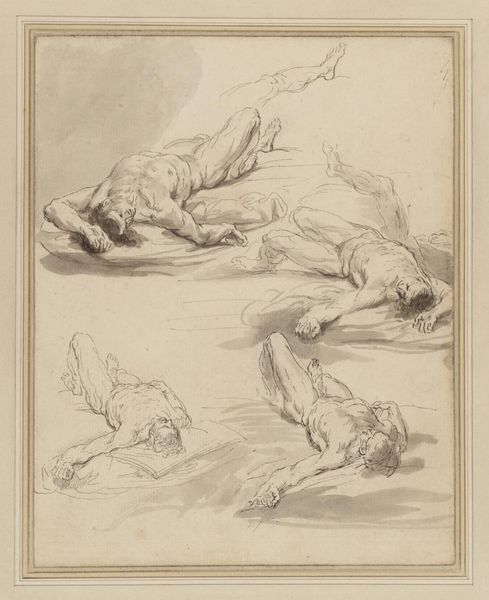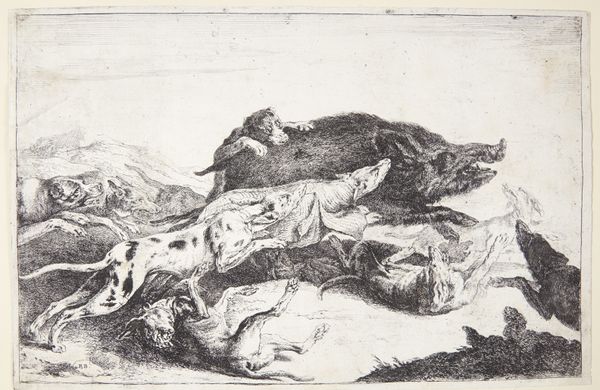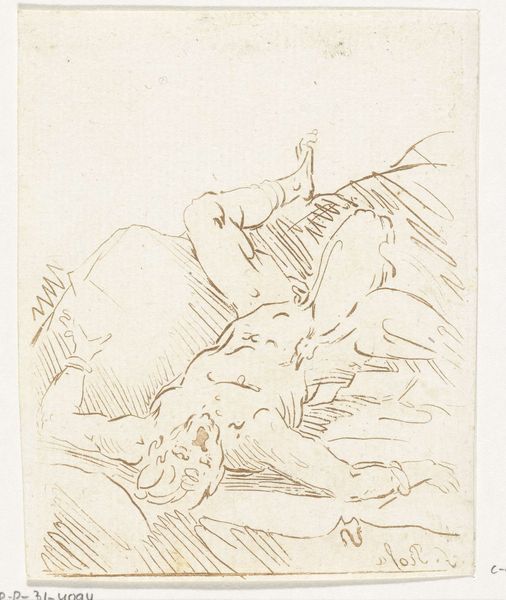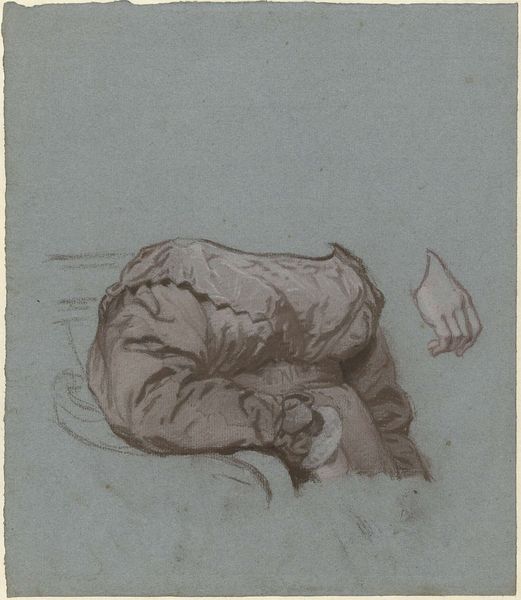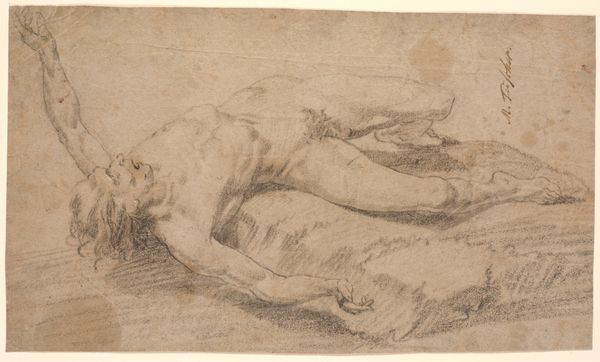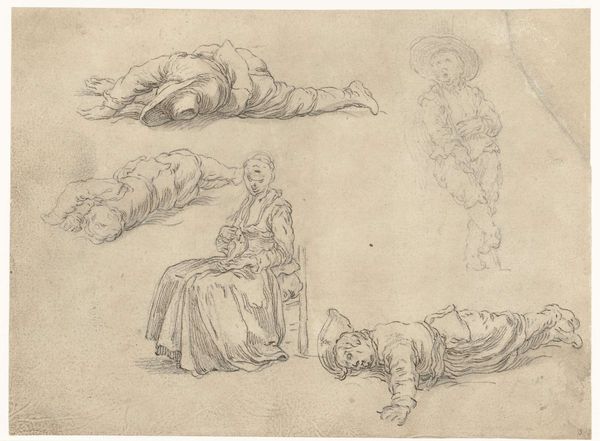
drawing, paper, pencil
#
portrait
#
drawing
#
dutch-golden-age
#
pencil sketch
#
figuration
#
paper
#
pencil
#
nude
Dimensions: height 191 mm, width 281 mm
Copyright: Rijks Museum: Open Domain
Curator: Before us is "Studieblad met schetsen van drie liggende mannen," a pencil drawing on paper, crafted by Leonaert Bramer sometime between 1606 and 1674. It currently resides here at the Rijksmuseum. Editor: My initial response is one of quiet repose. There's something almost dreamlike in their languid postures, despite their seeming discomfort. It's like a glimpse into a vulnerable, private moment. Curator: Indeed. Consider how Bramer uses line. The fluidity and softness suggest a preliminary exploration, a capturing of fleeting gestures rather than a fully realized composition. The lack of strong chiaroscuro further contributes to the muted atmosphere. Editor: But I also find myself thinking about who these men were, their social position. Were they laborers, perhaps, caught in a moment of respite, their bodies burdened by the day's toil? It speaks to the precarity of the working class, and the importance of depicting their struggles and hardships. Curator: It could be seen that way. However, the figures, particularly in their depiction of musculature and the fall of light across their forms, suggests an interest in anatomical study. Bramer could be said to be working within established academic traditions of figure drawing, seen through the lens of the Dutch Golden Age. Editor: Perhaps. Still, can we ignore the vulnerability they exhibit? Their postures almost invite empathy, reminding us of our own corporeal limits. In a time defined by rising mercantilism and Calvinist values of hard labor, these men represent an undercurrent of alternative lifestyles. I’d suggest these are depictions of common, not powerful, folk. Curator: Interesting, your interpretation challenges a purely formal reading, certainly opening new doors for a discussion around its meanings. Editor: Right? By acknowledging social history, art can become a vehicle for fostering critical consciousness about our social and economic systems. Curator: Thank you. Considering the construction of this work as a drawing rather than finished artwork certainly lends itself to new approaches to understanding its relevance to society and its role within academic practices. Editor: Absolutely. Thinking critically makes all the difference, and hopefully gives each of us food for thought.
Comments
No comments
Be the first to comment and join the conversation on the ultimate creative platform.
